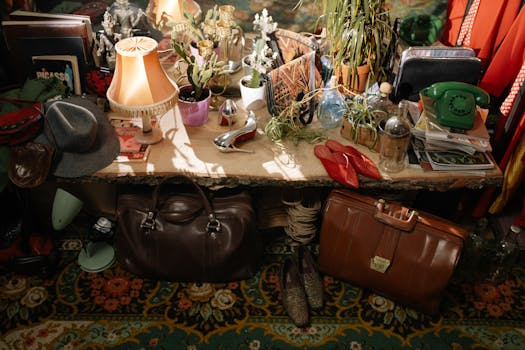The Rise of Thrift Shopping and Vintage Fashion
The fashion industry has always been a fast-paced and ever-evolving one. Trends come and go, styles change, and new designers emerge. However, in recent years, there has been a significant shift in the way people approach fashion. Slowly but surely, there has been a rise in thrift shopping and vintage fashion, challenging the idea of fast fashion and promoting sustainability in the industry. Let’s delve into this phenomenon and explore how thrift shopping and vintage fashion have become more than just a trend but a lifestyle.
The Thrift Shopping Culture
Thrift shopping, also known as second-hand shopping, has been around for decades. It involves purchasing pre-owned items from thrift stores, flea markets, garage sales, and online platforms. However, it was often associated with being a budget-friendly option or shopping out of necessity. But in recent years, people are turning to thrift shopping not just for the low prices but also for the unique and one-of-a-kind items that cannot be found in mainstream retail stores.
The rise in thrift shopping can be attributed to several factors. For one, the rise of social media has made it easier for individuals to display their thrifted finds, influencing others to give it a try. The environmental impact of fast fashion has also been a driving force for the popularity of thrift shopping. With the fashion industry being one of the world’s biggest polluters, people are looking for more sustainable ways to consume fashion.
The Appeal of Vintage Fashion
Along with thrift shopping, there has been a significant resurgence of vintage fashion. Vintage fashion refers to clothing from a particular era, typically garments from the 1920s to the 1980s. The rise of vintage fashion can be attributed to the desire for unique and statement pieces, as well as the nostalgia factor.
The popularity of vintage fashion can also be seen on social media, with influencers and celebrities showcasing their vintage finds and incorporating them into their modern wardrobe. The demand for vintage fashion has also led to the emergence of vintage-only boutiques and online stores.
The Impact on the Fashion Industry
The rise of thrift shopping and vintage fashion has had a considerable impact on the fashion industry. Firstly, it challenges the concept of fast fashion, which has been the norm for years. With an increasing number of people turning to thrift shopping and vintage fashion, the demand for new, cheap garments is decreasing. This, in turn, forces fashion brands to rethink their production and sustainability practices.
The rise of thrift shopping and vintage fashion has also promoted inclusivity and individuality in the fashion industry. With a wider range of sizes and styles available in thrift stores and vintage shops, people are no longer confined to what mainstream fashion dictates as trendy or in-style. This has led to a market shift, with brands now focusing on creating pieces that cater to a diverse audience.
In Conclusion
The rise of thrift shopping and vintage fashion has undoubtedly made an impact on the fashion industry. Not only has it challenged the notion of fast fashion and promoted sustainability, but it has also encouraged individuality and inclusivity in fashion. With the continued momentum, it is safe to say that thrift shopping and vintage fashion are here to stay, and hopefully, the fashion industry will continue to evolve towards a more sustainable and inclusive future.










